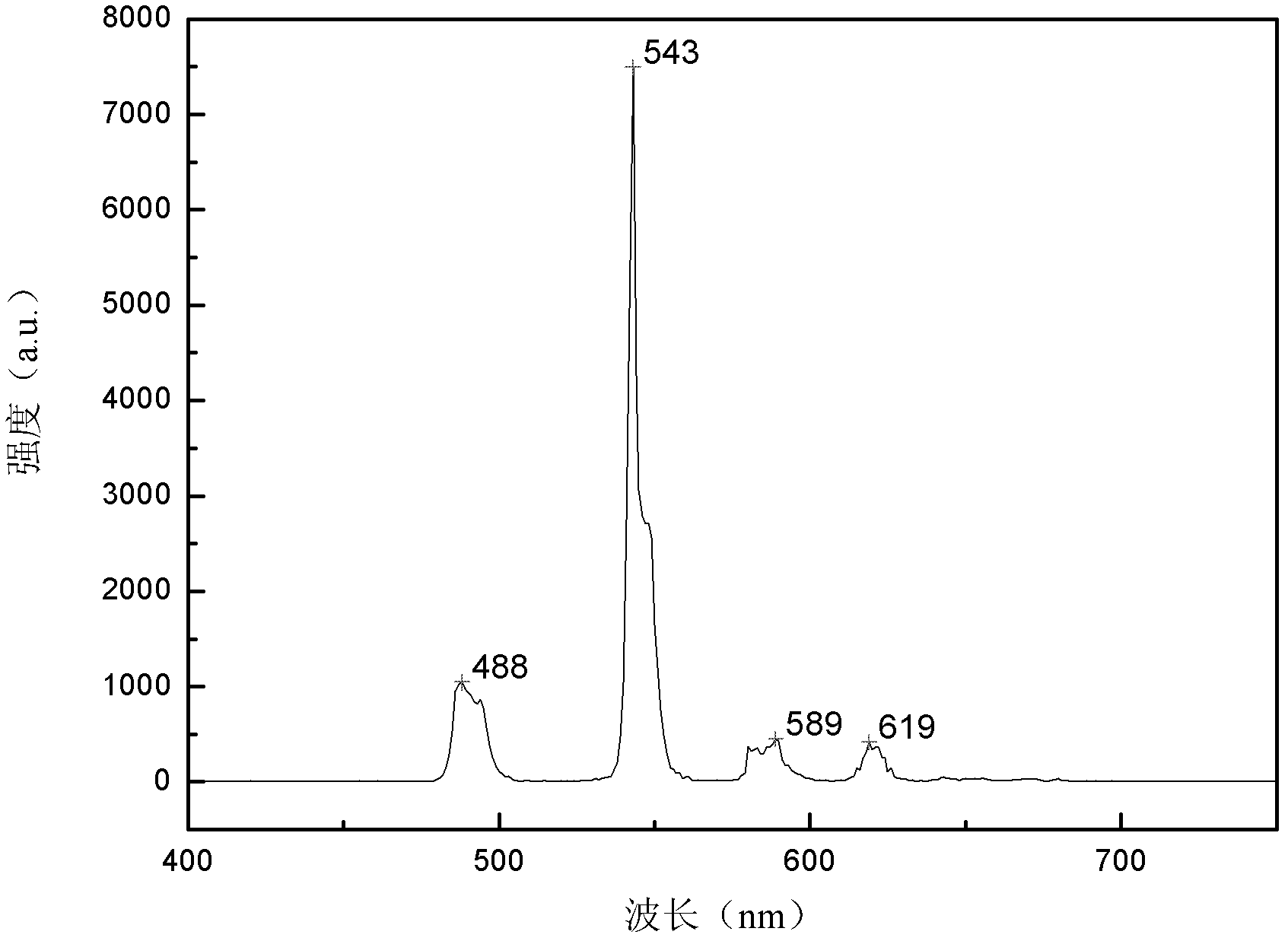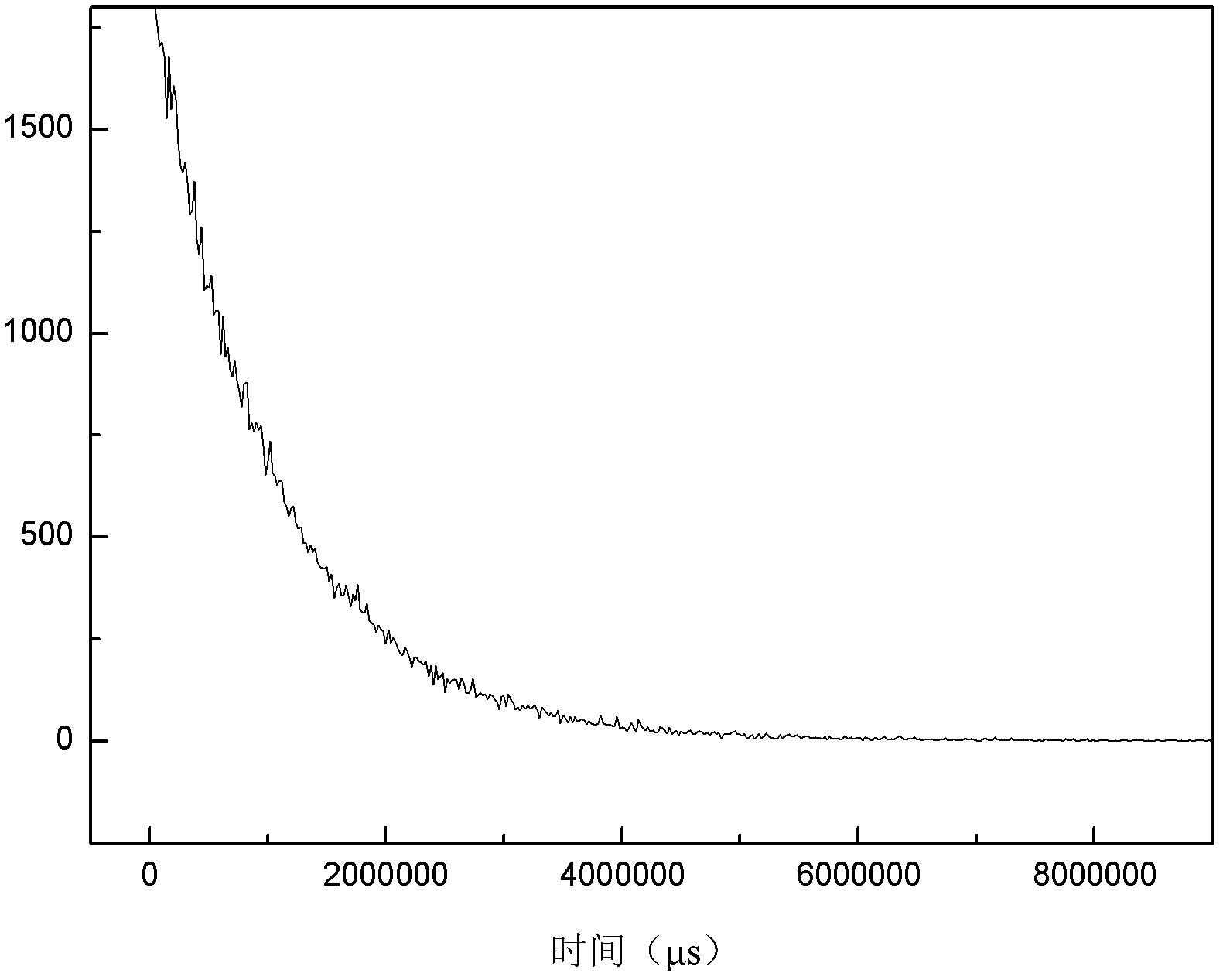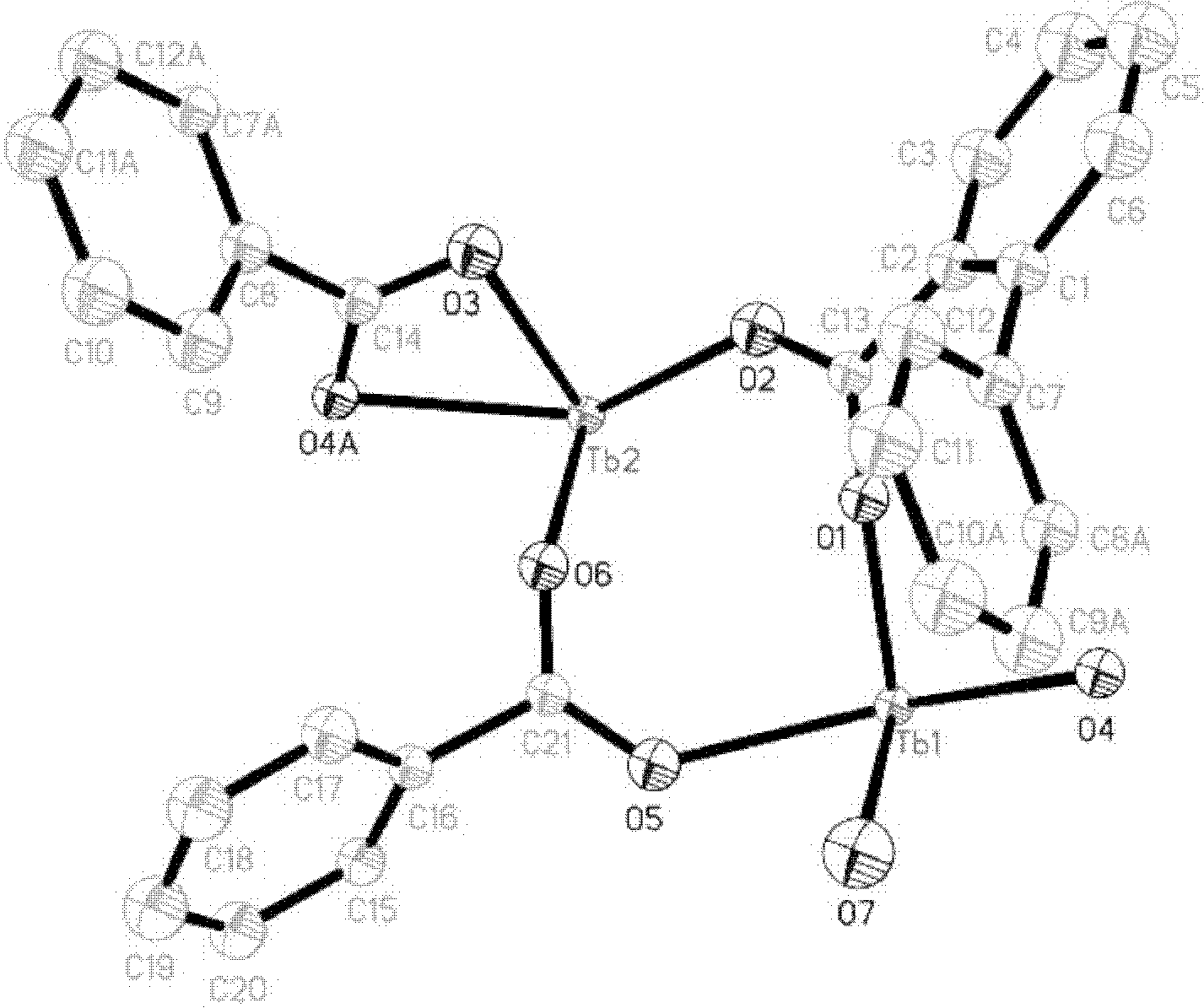Terbium coordination polymer and its synthesis method and application
A technology of coordination polymers and synthesis methods, applied in chemical instruments and methods, compounds containing elements of Group 3/13 of the periodic table, luminescent materials, etc., can solve the problems of short fluorescence lifetime, etc. Vivid, monochromatic effect
- Summary
- Abstract
- Description
- Claims
- Application Information
AI Technical Summary
Problems solved by technology
Method used
Image
Examples
specific Embodiment approach 1
[0012] Embodiment 1: The structure of the terbium coordination polymer in this embodiment is a three-dimensional supramolecular network structure formed by hydrogen bonding and π-π stacking between the one-dimensional chain terbium coordination polymers, and the one-dimensional chain terbium coordination polymer The molecular formula of the bit polymer is Tb(2,2'-bpdc) 1.5 h 2 O.
[0013] in Tb 2 (2,2'-BPDC) 3 (H 2 O) 2 As a structural unit, the central metal terbium has two eight-coordinated coordination modes, one of which is metal Tb(1) and six carboxyl oxygen atoms O1, O1#, O4, O4#, O5, O5# and the oxygen atoms O7 and O7# in the two coordinated water molecules coordinate to form a bond; the other is the metal Tb(2) with the same three 2,2'- The remaining eight carboxyl oxygen atoms O2, O2#, O3, O3#, O4, O4#, O6 and O6# coordinate in phthalic acid. At the same time, the ligand 2,2'-biphenyl dicarboxylic acid has two coordination modes in the coordination polymer. One...
specific Embodiment approach 2
[0019] Specific embodiment two: the synthetic method of terbium coordination polymer is realized through the following steps: at room temperature, terbium nitrate pentahydrate and 2,2'-biphenyl dicarboxylic acid are dissolved in distilled water, terbium nitrate pentahydrate and 2 , the molar ratio of 2'-biphenyldicarboxylic acid is 1:1, stirred and dissolved at room temperature, then placed in a stainless steel reactor lined with polytetrafluoroethylene, heated to 165 ° C, and kept at 165 ° C for reaction 4 After ~6 days, naturally cool to room temperature to obtain terbium coordination polymer.
[0020] The yield of the terbium coordination polymer in this embodiment is about 50%.
specific Embodiment approach 3
[0021] Embodiment 3: This embodiment is different from Embodiment 2 in that: the reaction is carried out at 165° C. for 5 days. Other steps and parameters are the same as in the second embodiment.
[0022] The yield of the terbium coordination polymer in this embodiment is 50%.
[0023] Utilize the FLSP920 combined steady-state transient fluorescence / phosphorescence spectrometer to carry out the fluorescence spectrum and fluorescence lifetime test of the organic light-emitting material terbium coordination polymer in this embodiment, and obtain the following results: figure 1 The fluorescence spectra shown and figure 2 The fluorescence lifetime curves are shown. It can be seen that at room temperature and solid state, with 304nm as the excitation wavelength, the characteristic emission peaks of terbium coordination polymers are 488nm ( 5 D. 4 → 7 f 6 ), 543nm ( 5 D. 4 → 5 f 5 ), 589nm ( 5 D. 4 →7F 4 ) and 619nm ( 5 D. 4 → 7 f 3 ), showing the strong green flu...
PUM
 Login to View More
Login to View More Abstract
Description
Claims
Application Information
 Login to View More
Login to View More - R&D
- Intellectual Property
- Life Sciences
- Materials
- Tech Scout
- Unparalleled Data Quality
- Higher Quality Content
- 60% Fewer Hallucinations
Browse by: Latest US Patents, China's latest patents, Technical Efficacy Thesaurus, Application Domain, Technology Topic, Popular Technical Reports.
© 2025 PatSnap. All rights reserved.Legal|Privacy policy|Modern Slavery Act Transparency Statement|Sitemap|About US| Contact US: help@patsnap.com



